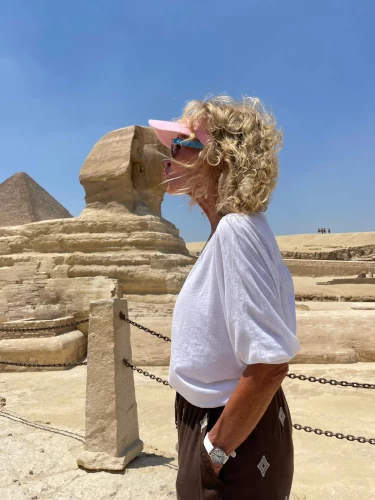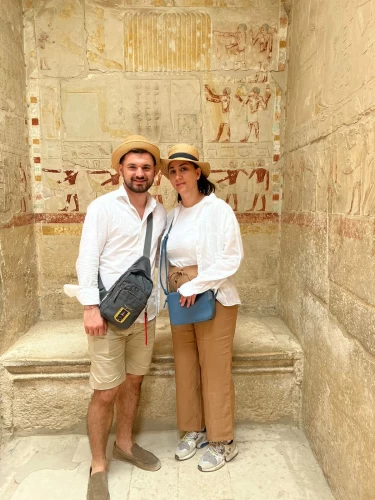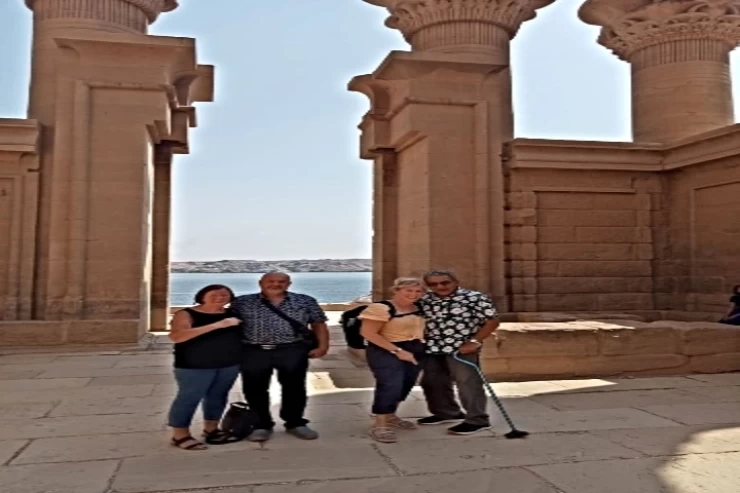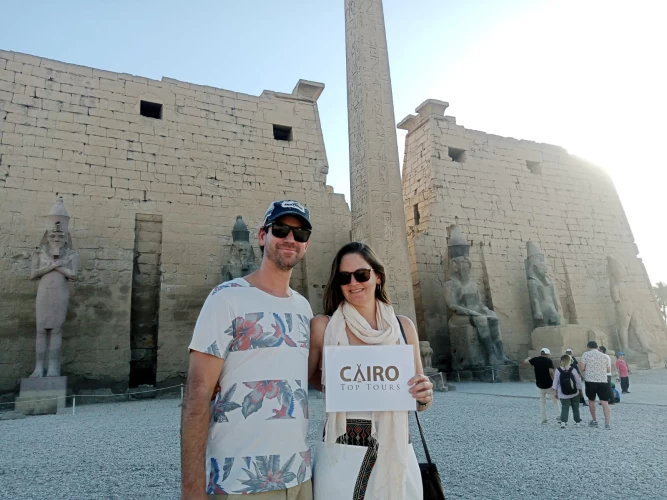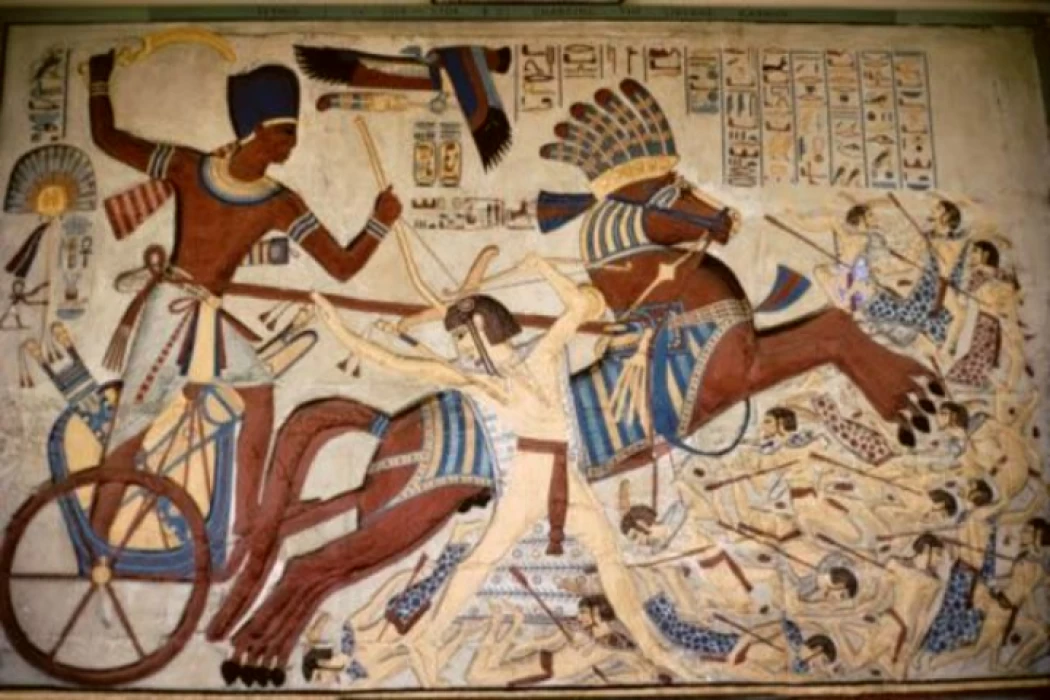
King Ahmose | The Warrior Pharaoh of Ancient Egypt
King Ahmose | The Warrior Pharaoh of Ancient Egypt
The New Empire of Egypt was the historical era that started in 1550 BC with the reunification of Egypt under Amosis I and ended in 1070 BC with the ascension of rulers of Libyan descent to the throne. The dynasties of XVIII, XIX, and XX make up this group. It moves from Egypt's Second Intermediate Period to its Third Intermediate Period. The term "Ramesid Period" refers to the final two dynasties, XIX and XX.
King Ahmose I, the liberator of the new Egypt and the unifier of Egypt after a long rupture, the maker of Egypt’s military glory, and the founder of the era of the Eighteenth Dynasty, who inspired his successors to establish a vast Egyptian empire in the ancient Near East as one of the most important lessons learned from the Hyksos occupation of Egypt, which is the defense of Egypt on a non-Egyptian land that belongs to the Egyptian Empire.
Ahmose I was a pharaoh of ancient Egypt and the founder of the Eighteenth Dynasty, and he was a member of the royal family of Thebes, the son of the pharaoh Seqenen Ra and the brother of the last pharaoh of the seventeenth dynasty, King Kamose, during the reign of his father or grandfather, Thebes rebelled against the Hyksos, rulers of Lower Egypt, when He was seven years old when his father was killed, and at about ten when his brother died of unknown reasons, and he ruled for only three years, Ahmose I assumed the throne after the death of his brother.
The young king succeeded in expelling the foreign occupier who controlled the northern lands and the Mediterranean for about 100 years and began extensive military reforms, paving the way for those who came after him to expand the area of Egypt to extend from the land of Nubia in the south to the Tigris and Euphrates rivers in the north, thus becoming the first empire known to human history, and a product of A lesson from the past and defending Egypt outside its borders and not waiting for the enemy to come to it. He founded a family of the most famous royal family throughout history. Among his grandchildren were the great Queen Hatshepsut, Thutmose III, founder of the Great Egyptian Empire, Amenhotep IV, the first to call for the worship of the one god from the rulers of Egypt, and Tutankhamun, the golden king.
The mummy of Pharaoh "Ahmose the First", to whom Egypt owes its final liberation from the bondage of the Hyksos, and the founding of a family that is one of the most famous families in the world, if not the greatest, which made him one of the greatest kings of Egyptian history, indicate that he died in the spring of life between forty and fifty, and we also deduce Among his mummies, which were found among the mummies that were found in the cache of Deir al-Bahari, is that of a strong man with large shoulders, and a wreath of flowers surrounded his goodness.
The young king erected a plaque in the Karnak temple in Luxor to commemorate his glories, and what was written on it: “Listen, O people of Upper Egypt, O religious men, O people of Lower Egypt, and O all you people, who follow this king in his steps, announce his glory to others and purify in his name.” And purify with his life (by swearing an oath), and contemplate that he is a god on earth, so submit to him submission like (Ra), praise him like your praise on the moon, for he is the king of Upper Egypt and Lower Egypt (Neb Behti Ra) who puts in fetters every foreign land.”
Latest Articles
Admin
Seabourn Sojourn Cruise Stops in Safaga Port
The Seabourn Sojourn, the flagship vessel of Seabourn Cruise Line's ultra-luxury fleet, was built in 2008 at the T. Mariotti shipyard in Genoa, Italy. Measuring 198 metres, it can accommodate up to 450 guests in its 225 spacious all-suite staterooms.
Admin
Norwegian Sky Cruise Stops in Safaga Port
Norwegian Cruise Line operates a cruise ship called the Norwegian Sky. It was constructed in 1999 and can accommodate 2,004 passengers in addition to 878 crew members. The ship has several dining establishments, lounges and bars, a spa and fitness center, swimming pools, and a number of entertainment areas.
Admin
Explora II Cruise Stops in Safaga Port
Explora II, the second vessel in the Explora Journeys fleet, sets sail in 2024 to redefine luxury cruising. With 461 ocean-front suites, 9 culinary experiences, and 4 pools, this haven of sophistication and sustainability promises an unforgettable "Ocean State of Mind" journey to inspiring destinations.
Admin
Mein Schiff 6 Cruise Stops in Safaga Port
The Mein Schiff 6 is the latest cruise ship in the renowned TUI Cruises fleet, offering passengers a luxurious and sophisticated cruise experience. At 315 metres long, this floating resort features a range of dining options, entertainment, and recreational facilities, including a spa, fitness centre, and sports amenities.
Admin
Mein Schiff 4 Cruise Stops in Safaga Port
When the Mein Schiff 4 cruise ship docks in Safaga, Egypt, passengers are granted access to a realm of ancient wonders. Aboard this state-of-the-art vessel, guests can embark on meticulously curated shore excursions that showcase the region's most iconic landmarks, including the Giza Pyramids, the enigmatic Sphinx, and the remarkable tombs and temples of the Valley of the Kings in Luxor.
Admin
MS Europa Cruise Stops in Safaga Port
The Silver Moon, Silversea's latest flagship, is a luxury cruise ship that offers an exceptional travel experience for Venezuelans exploring Egypt. With a capacity of 596 guests and an impressive 40,700 gross tonnes, the Silver Moon maintains the small-ship intimacy and spacious all-suite accommodations that are the hallmarks of the Silversea brand.








